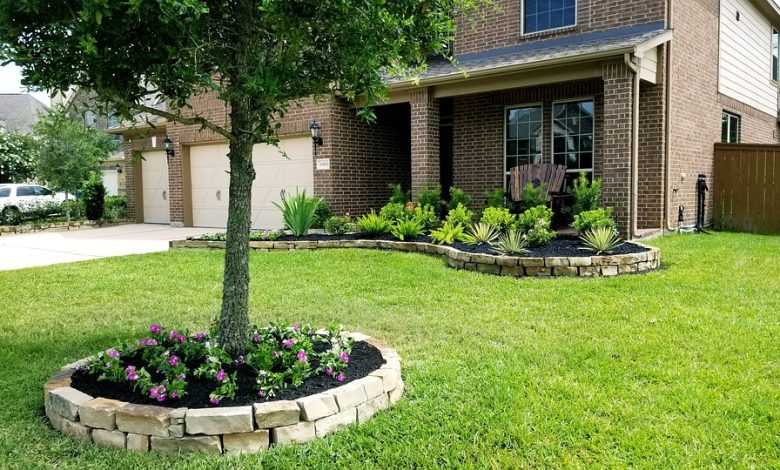How To Open A Sober Living House

What is a Sober Living House?
A Sober Living House, also known as a sober living home or halfway house, is a residential facility that provides a supportive and structured living environment for individuals recovering from drug or alcohol addiction. It serves as a transitional living option for individuals who have completed a formal addiction treatment program, such as inpatient rehabilitation.
The primary purpose of a Sober Living House is to help individuals maintain their sobriety, develop essential life skills, and transition back into independent living. It offers a supportive community and a drug-free environment that promotes accountability, personal growth, and relapse prevention.
The concept of sober living homes can be traced back to the early 20th century, with the origins of the Alcoholics Anonymous (AA) movement. AA was founded in 1935 by Bill Wilson and Dr. Bob Smith, who developed a program based on mutual support and the Twelve Steps to help individuals recover from alcohol addiction.
As AA grew in popularity, individuals in recovery recognized the need for a supportive living environment that would bridge the gap between inpatient treatment and independent living. This led to the emergence of sober living homes or halfway houses, where individuals could continue their recovery journey in a structured and supportive setting.
In the 1940s and 1950s, the concept of halfway houses gained more recognition within the addiction treatment community. These homes provided a supportive environment where individuals could live in a substance-free setting, receive support from peers, and develop the skills necessary for independent living. Halfway houses were often run by volunteers or religious organizations and aimed to assist individuals in maintaining their sobriety.
In the 1970s, the concept of sober living homes expanded further, particularly in response to the growing need for ongoing support for individuals recovering from drug addiction. The emergence of Narcotics Anonymous (NA), a support group similar to AA but focused on drug addiction, also contributed to the growth of sober living homes as a support option for those in recovery.
Over the years, the field of addiction treatment and recovery has evolved, and sober living homes have become more structured and professionalized. Many sober living homes today have established rules and guidelines, professional staff, and a focus on relapse prevention, life skills development, and community integration.
The recognition of the effectiveness of sober living homes in supporting long-term recovery has led to increased acceptance and integration of these facilities within the addiction treatment continuum. They are now seen as valuable resources for individuals transitioning from treatment programs and seeking ongoing support in a sober and supportive environment.
How do sober living houses work?
Sober living houses operate based on the principles of providing a supportive and structured living environment for individuals in recovery from drug or alcohol addiction. Here’s how they typically work:
1. Admissions Process: Individuals interested in residing in a sober living house usually go through an admissions process. This may involve an initial screening or assessment to determine if the person is a suitable fit for the house and if the house can meet their specific needs.
2. Residence and Length of Stay: Residents live in the sober living house for a defined period, which can vary depending on the individual’s needs and goals. Some houses may have a minimum or maximum length of stay requirements. The length of stay is typically designed to provide individuals with adequate time to solidify their recovery and develop the skills necessary for independent living.
3. Structured Environment: Sober living houses offer a structured environment that promotes accountability and personal growth. They often have rules and guidelines that residents must adhere to. These rules may include maintaining sobriety, attending support group meetings, participating in household chores, adhering to curfews, and respecting the rights and boundaries of others in the house.
4. Supportive Community: Sober living houses foster a sense of community among residents. Living with peers who are also in recovery creates a supportive network where individuals can share experiences, offer encouragement, and provide accountability. The community aspect can be a significant source of support and can help individuals build a strong foundation in their recovery journey.
5. Accountability: Residents are typically held accountable for their actions and behaviors. This may involve regular check-ins with staff or house managers, random drug and alcohol testing, and adherence to the rules and guidelines of the house. Accountability measures are in place to support individuals in maintaining their sobriety and fostering personal responsibility.
6. Support and Services: Sober living houses often provide additional support and services to residents. This can include access to counseling or therapy services, referrals to outpatient treatment programs, assistance in finding employment or educational opportunities, and connections to community resources that support recovery and independent living.
7. Financial Obligations: Residents are usually responsible for paying rent and meeting their financial obligations. The cost of living in a sober living house varies depending on factors such as location, amenities provided, and level of support offered. Some individuals may receive financial assistance through scholarships, grants, or other funding sources.
8. Gradual Transition to Independence: Sober living houses aim to help residents transition to independent living gradually. As individuals progress in their recovery journey, they are encouraged to take on more responsibilities, such as seeking employment, pursuing education, and making plans for independent housing. Sober living houses often provide support and guidance during this transition phase.
It’s important to note that the specific workings of sober living houses can vary between different facilities. Each house may have its own set of rules, guidelines, and services. The ultimate goal is to provide a supportive and structured environment that assists individuals in maintaining their sobriety, developing life skills, and successfully transitioning to independent living.
How to open a sober living house
Opening a sober living house involves several important steps and considerations. Here is a general guide to help you get started:
1. Research and Planning:
• Familiarize yourself with local regulations and zoning requirements for operating a sober living house in your area. Contact local government agencies or consult with an attorney to understand the legal aspects.
• Conduct market research to assess the need for a sober living house in your community. Identify the target population, competition, and potential demand.
• Develop a business plan that outlines your goals, target population, services provided, budget, marketing strategies, and operational details.
2. Licensing and Certification:
• Determine the licensing and certification requirements specific to your location. Contact the appropriate regulatory agencies, such as state health departments or addiction services departments, to understand the necessary permits, certifications, or licenses needed to operate a sober living house.
• Comply with safety regulations, building codes, and health department guidelines to ensure the facility meets the required standards.
3. Location and Property:
• Find a suitable location for your sober living house. Consider factors such as proximity to transportation, amenities, and support services.
• Assess the property for its capacity to accommodate residents, ensure safety, and create a comfortable living environment. It should meet the needs of residents in terms of bedrooms, bathrooms, common areas, and other essential facilities.
4. Staffing:
• Determine the staffing requirements for your sober living house. This may include hiring house managers, case managers, counselors, or support staff depending on the size and scope of the facility.
• Establish job descriptions, qualifications, and a hiring process for staff members. Seek individuals with relevant experience, training in addiction recovery, and the ability to support residents in their recovery journey.
5. Program Development:
• Develop a comprehensive program that outlines the structure, services, and rules of the sober living house. This includes guidelines for admission criteria, resident expectations, house rules, curfew, drug testing policies, and consequences for rule violations.
• Create a relapse prevention plan that includes access to support group meetings, counseling services, and referrals to outpatient treatment programs or other resources in the community.
6. Networking and Partnerships:
• Build relationships with local addiction treatment centers, healthcare providers, therapists, and community organizations. Establish partnerships and referral networks to ensure a seamless continuum of care for residents.
• Connect with organizations that provide funding or scholarships for individuals seeking recovery housing. Explore potential collaborations to increase affordability and accessibility for residents.
7. Marketing and Outreach:
• Develop a marketing strategy to promote your sober living house. This may involve creating a website, utilizing social media platforms, distributing informational materials to healthcare providers, attending community events, and networking with professionals in the addiction treatment field.
• Emphasize the benefits and unique features of your sober living house, such as the supportive community, structure, accountability, and additional services provided.
8. Financial Management:
• Create a financial plan that includes projected expenses, income sources (such as resident fees or grants), and budgeting for ongoing operational costs.
• Establish financial policies, procedures for rent collection, record-keeping, and financial reporting.
9. Admissions Process:
• Develop an admissions process that includes screening criteria, intake assessments, and procedures for resident selection.
• Create an orientation process for new residents that includes reviewing the program guidelines, expectations, and rights and responsibilities.
10. Continuous Improvement and Evaluation:
• Regularly evaluate and assess the effectiveness of your sober living house program. Seek feedback from residents, staff, and stakeholders to identify areas for improvement and make necessary adjustments to enhance the quality of services provided.
Remember to consult with professionals such as attorneys, accountants, and experts in the addiction treatment field to ensure you meet all legal and ethical




